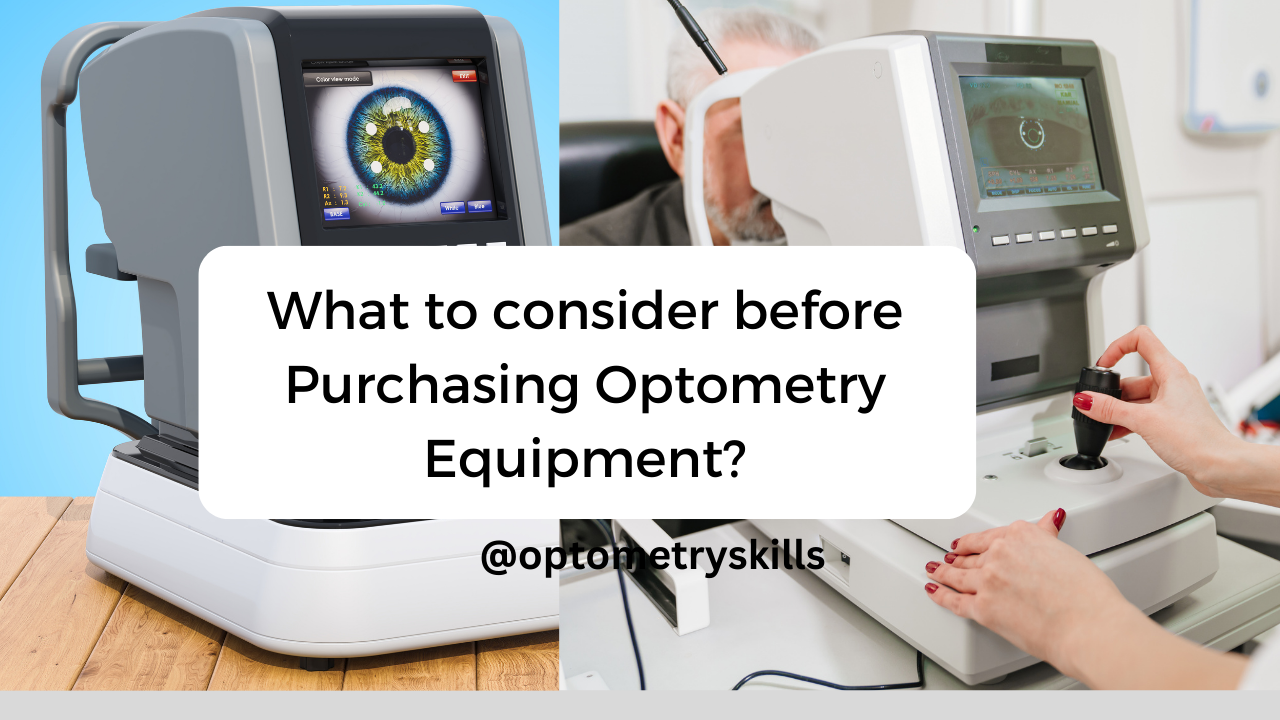What to consider before Purchasing Optometry Equipment?

Purchasing optometry equipment is a significant investment for any practice. Making the right choices can enhance your services, increase patient satisfaction, and streamline your operations. Here are ten crucial things to know before you make a purchase.
1. Understand Your Practice’s Needs
Before you start shopping, assess the specific requirements of your practice. Consider the types of services you offer and the volume of patients you see. Identifying your needs will help you prioritize which equipment is essential and which features will benefit your practice the most.
Today’s optometry equipment should provide both form and functional data. Form data offers structural information, such as OCT (Optical Coherence Tomography), which is highly objective and provides accurate reliability measurements. Functional data gives insight into how well the eye is performing its functions.
For example, an OCT with angiography capabilities can provide detailed markers for optic nerve health, ganglion cell complex, and retinal health. This data helps track disease progression and predict vision changes before subjective vision loss occurs. Understanding these differences helps you select the equipment that best meets your clinical needs.
2. Set a Budget
Setting a budget is crucial. Determine how much you can afford to spend without compromising other areas of your practice. Keep in mind that higher-priced equipment often comes with advanced features and better warranties, but there are also cost-effective options that offer great value.
3. Research Different Brands and Models
Take the time to research various brands and models of optometry equipment. Compare the leading brands in the industry, considering the pros and cons of each. Pay attention to reliability, durability, and user-friendliness. This research will help you make an informed decision.
Integrate Advanced Imaging Technologies
The future of eye care imaging lies in the integration of advanced technologies. Equipment that combines multiple diagnostic tests, such as angiography, autofluorescence, and infrared imaging, can provide a comprehensive clinical picture with a smaller footprint. This integration allows for more efficient use of space and resources in your practice.
Ensure Data Portability and Compatibility
Data portability and compatibility are crucial in the modern healthcare environment. Equipment that supports DICOM (Digital Imaging and Communications in Medicine) standards ensures that data is storable and portable, allowing for seamless integration with other systems and easier data sharing.
Prioritize Secure Data Storage
Invest in secure data storage solutions to protect patient information and comply with HIPAA regulations. Avoid cutting corners with cheap storage options that may compromise data security. Use encrypted or protective software to ensure the highest level of security for your electronic health records.
4. Check for Compliance and Certifications
Ensure the equipment you purchase meets industry standards and has the necessary certifications. This is vital for the safety of your patients and the credibility of your practice. Certified equipment is more likely to be reliable and effective.
5. Evaluate the Equipment’s Features
Look for key features that will benefit your practice. Consider the technology used, ease of use, and the specific functionalities of the equipment. Advanced features can improve efficiency and accuracy in your practice, but make sure they align with your needs.
6. Consider the Equipment’s Warranty
Optometry equipment is a long-term investment. Check the expected lifespan of the equipment and the warranty offered by the manufacturer. A good warranty can save you money on repairs and maintenance in the long run, providing peace of mind.
7. Read Reviews and Seek Recommendations
Reading reviews and seeking recommendations from peers can provide valuable insights. Look for reviews from other optometrists who have used the equipment. Peer recommendations can highlight practical aspects and potential issues you might not find in product descriptions.
8. Consider Financing Options
Explore the various financing options available. Leasing can be a good option if you prefer lower initial costs and the ability to upgrade more frequently. Buying, on the other hand, can be more cost-effective in the long run. Weigh the pros and cons of each option based on your financial situation.
9. Plan for Installation and Training
Once you’ve chosen your equipment, plan for its installation and the initial setup. Ensure you and your staff receive proper training to use the equipment effectively. Proper training can maximize the benefits of your new equipment and minimize the risk of errors.
10. Post-Purchase Support and Maintenance
Consider the post-purchase support and maintenance requirements. Choose a supplier that offers reliable customer support and maintenance services. Regular maintenance is essential to keep your equipment in optimal condition and extend its lifespan.
Follow us in Facebook
